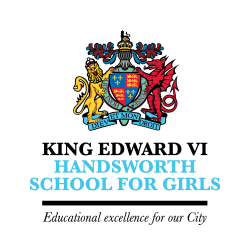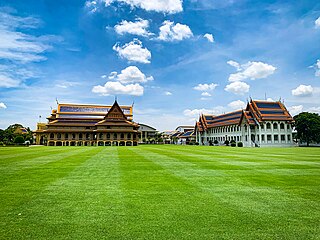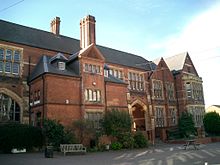
Sherborne School is a public school located beside Sherborne Abbey, in the parish of Sherborne, Dorset. The school has been in continuous operation on the same site for over 1,300 years. It was founded in 705 AD by St Aldhelm and, following the dissolution of the monasteries, re-founded in 1550 by King Edward VI, making it one of the oldest schools in the United Kingdom. Sherborne is one of the twelve founding member public schools of the Headmasters' and Headmistresses' Conference in 1869 and is a member of the Eton Group and Boarding Schools Association.
Christ's College, Canterbury is an independent Anglican secondary day and boarding school for boys, located in the city centre of Christchurch, New Zealand.

Bedford Modern School is a Headmasters' and Headmistresses' Conference independent school in Bedford, England. The school has its origins in The Harpur Trust, born from the endowments left by Sir William Harpur in the sixteenth century. BMS comprises a junior school and a senior school.

King Edward VI Handsworth School is a grammar school for girls aged 11–18 located in Handsworth, Birmingham, England. It is part of the Foundation of the Schools of King Edward VI. The school was founded in 1883 as King Edward's Aston on the site where its brother school, King Edward VI Aston School, remains to this day. In 2019 there were 1086 girls on roll. Pupils must pass an 11-plus entrance exam to get into the school. The King Edward Schools are fiercely competitive to get admission to, as only 1 in 10 are successful in passing the entrance exam. The King Edward VI Foundation holds its exams at the same time, and generally a candidate will sit one exam for multiple schools within the foundation. Notable leaver's destinations from this school in previous years have been Birmingham, Aston, Oxford, and Nottingham. The leavers destinations by course were mainly medicine, dentistry, law, business studies and computer science.

King Edward VI Handsworth Grammar School for Boys, formerly and commonly Handsworth Grammar School, is a grammar school that admits boys from the age of eleven. The school was founded in 1862 and is located in Handsworth, Birmingham, England. it is situated just off the A41, near the junction with the A4040. King Edward Handsworth Grammar School is sometimes abbreviated as HGS. The headmaster is Simon N Bird.

King Edward's School (KES), Bath, Somerset, England is an independent co-educational day school providing education for 1,134 pupils aged 3 to 18. The school is a member of The Headmasters' and Headmistresses' Conference.

Newington College is a multi-campus independent Uniting Church single-sex and co-educational early learning, primary and secondary day and boarding school for boys, located in Stanmore, an inner-western suburb of Sydney, New South Wales, Australia. Established in 1863 at Newington House, Silverwater, the college celebrated its sesquicentenary in 2013. The college is open to boys of all faiths and denominations. Newington has been governed by an Act of Parliament since 1922.
Lancaster Royal Grammar School (LRGS) is a selective grammar school for boys aged 11–18 in Lancaster, Lancashire, England. Old students belong to The Old Lancastrians. The school's sixth form opened to girls in 2019. LRGS is also in the United Kingdom's thirty oldest schools.

Bloxham School, also called All Saints' School, is a private co-educational day and boarding school of the British public school tradition, located in the village of Bloxham, three miles (5 km) from the town of Banbury in Oxfordshire, England. The present school was founded in 1860 by Philip Reginald Egerton and has since become a member of the Woodard Corporation. The current headmaster is Paul Sanderson, who took over from Mark Allbrook in 2013. The school has approximately 515 pupils.
Maritzburg College is a semi-private English-medium high school for boys situated in the city of Pietermaritzburg, in KwaZulu-Natal, South Africa. It was founded in 1863 and it's the oldest boys' high school in KwaZulu-Natal – and one of the oldest schools in South Africa. As of December 2021 it is attended by 1 265 students, of whom approximately 470 are boarders.

The Skinners' School, is a British Grammar School with academy status for boys located in the town of Royal Tunbridge Wells, Kent, England. Established in 1887, the school was founded by the Worshipful Company of Skinners in response to a demand for education in the region. Today Skinners' remains an all-boys grammar school, recently awarded specialist status in science and mathematics in recognition of these disciplines' excellent teaching. The current enrolment is 1119 pupils, of whom around 325 are in the sixth form. The first headmaster was Reverend Frederick Knott, after whom Knott House is named. The current Headmaster is Edward Wesson.

Vajiravudh College is a private all-boys boarding school located at 197 Rajvithi Road, Dusit, Bangkok 10300 Thailand. The school was established by Phra Mongkut Klao Chaoyuhua - King Rama VI who is also known as King Vajiravudh. It was originally named the Royal Pages College before the King shifted Thai King College students to Royal Pages College and renamed it to Vajiravudh College. In the college, the students are accommodated in houses (Ka-na) which are generally in primary and secondary education houses. The primary students stay in 3 houses called Sanamchan, Nandhauthayan, and Saranrom. The secondary students are divided into 6 houses called School House, Dusit House, Chitlada House, Phyathai House, Chongruk-Bhakdi House, and Saksri-Mongkol House. Overall, the college supports students to balance sports and music or arts activities with academic education. Normally, boys enter the school at Prathom 4 and stay on until they finish high school - Mathayom 6.

The Royal Hospital School is a British co-educational fee-charging boarding and day school with naval traditions. The school admits pupils from age 11 to 18 through Common Entrance or the school's own exam. The school is regulated by Acts of Parliament.

Warwick School is a selective, public school in Warwick, England.

Bishop Cotton School is a boarding school in Shimla, Himachal Pradesh. It is one of the oldest boarding schools for boys in Asia, having been founded on 28 July 1859 by Bishop George Edward Lynch Cotton. Bishop Cotton also founded the Bishop Cotton School in Nagpur. The alumni of Bishop Cotton are known as Old Cottonians. The Bishop Cotton School, Shimla celebrated 150 years of existence in 2009.

St Ambrose College is a Christian Brothers' Roman Catholic boys' grammar school in Hale Barns, Altrincham, Greater Manchester, England. It was founded in 1946 by Dr Joseph Robertson. In 2012 the school became an academy, and was completely re-built. Upon leaving the college, boys are referred to as ‘Old Ambrosians’ and many go on to join the Old Boys' Association.

King Edward VI Camp Hill School for Girls, also known as Camp Hill Girls, is a selective grammar school in Kings Heath, Birmingham, for students aged 11 to 18. It is one of the most academically successful schools in the United Kingdom, currently ranked 10th among state schools. It is one of seven schools in Birmingham that are part of the King Edward VI Foundation. It shares a campus with King Edward VI Camp Hill School for Boys and, in 1958, both schools moved from their original location in central Birmingham to Vicarage Road in the Birmingham suburb of Kings Heath. The buildings are connected and some facilities and activities are shared, but they are separate establishments. The name has been retained from the school's former site at Camp Hill.

Royal College, Colombo is a selective entry boys' school located in Cinnamon Gardens, Colombo, Sri Lanka. Started as a private school by Rev Joseph Marsh in 1835, it was established as the Colombo Academy by Sir Robert Wilmot-Horton in January 1836, as part of the implementation of the recommendations of the Colebrooke Cameron Commission (1833), and was the first government-run secondary school for boys in the island.
Sekolah Menengah Kebangsaan All Saints is a single-session secondary school located in Jalan Teluk Likas of Kota Kinabalu, Sabah, Malaysia. It is also known as All Saints Secondary School and SM All Saints for short. The school was opened in 1903 when Kota Kinabalu was known as Jesselton, making it one of the oldest schools in Kota Kinabalu.
















